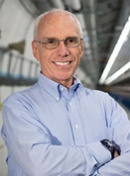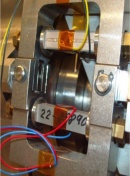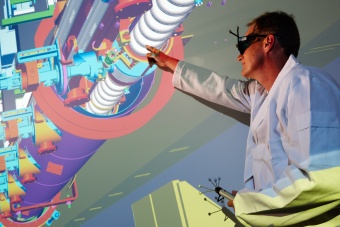Image of the week
Cavities in stereoUsers can take a virtual tour through the European XFEL tunnel, currently under construction, walking through the newly planned facilities to get an idea of its space and future working conditions. The nine-cell structures of pure niobium are designed to speed up the electrons at DESY’s FLASH, the European XFEL, and the ILC. The picture was taken in DESY’s IPP stereo projection room, where it is possible to project and view three-dimensional models on a 1:1 scale. |
In the News
-
from BBC News1 July 2011US particle physicists are inching closer to determining why the Universe exists in its current form, made overwhelmingly of matter.
-
from BBC News29 June 2011Unexplained “filaments” of radio-wave emission close to our galaxy’s centre may hold proof of the existence of dark matter, researchers have said.
-
from Fermilab24 June 2011Scientists of the MINOS experiment [...] announced [...] the results from a search for a rare phenomenon, the transformation of muon neutrinos into electron neutrinos. The result is consistent with and significantly constrains a measurement reported 10 days ago by the Japanese T2K experiment…
Copyright © 2024 ILC International Development Team




